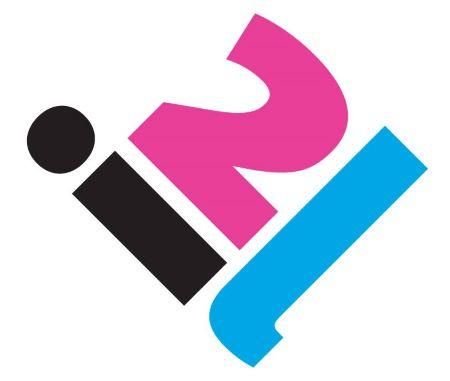Why coaching programmes don’t always work
Over the years I have been involved in supporting organisations to develop coaching programmes. Sometimes I have been a contracted external coach to a coaching programme that is already up and running, whilst on other occasions I have been a consultant and coach contracted by an organsaiton that is in the early stages of seeking to establish a coaching culture.
A couple of times I have been contracted to help revive flagging coaching programmes. I’ve learn a lot from all of these experiences. So why don’t coaching programmes always work?
In no particular order….
Not enough formality. Not enough form filling and feedback can be a disaster. Lack of tracking means that no-one really knows the level of coaching activity or the impact, let alone monitoring the quality of the coaching. Form filling is a fine balance, between collecting valuable data, monitoring engagements and ensuring a robust coaching service. This applies to both internal and external coaches. Too much form filling isn’t a great idea either – strike the balance.
The enthusiast leaves. I have seen coaching programmes appear to thrive, only for the programme lead to move on to pastures new and the coaching to fizzle out extremely quickly. A sustainable coaching programme (and progress towards a coaching culture) needs to be independent of one enthusiastic leader. If person concerned leaves and all the experience and knowledge leaves with them. In the absence of clear policies, records and other paperwork, the situation is unsustainable (see point 1 above).
Not setting the 3Ps for the programme – failing to communicate the philosophy, processes and purpose of the coaching programme will be disastrous in the long term. This includes the need for robust outcomes against which quality and impact on individual and organisational performance can be measured.
Lack of supervision. Who will be looking after your coaches and attending to their well-being, ethics and continued CPD? In my view, there should be external supervision. Peer supervision can work well, as can having an internally trained supervisor. However I would question where the vested interests would compromise supervision being at its best, which includes the risk of colluding with supervisees.
Lack of clarity about the role of the coach. Be sure what type of coaching is being offered and repeatedly communicate this – one briefing and a launch party isn’t going to cut the mustard in this case. There are many styles of coaching and the debate about what is right or best will no doubt rage for years. You need to decide on the type of coaching that is being offered and then explain and promote it at every opportunity.
Coaching becomes a remedial intervention. If I had a pound for the number of times a potential coachee had been put in touch with me by HR or their manager to be ‘fixed’! Coaching must not be used as a solution to lazy or cowardly performance management. End of story. Support managers to give better feedback and develop their direct reports, with line management or HR support in reserve. Coaching may well be a developmental offering within the performance management process, but with a mind to developing potential rather than fixing. Exploring rather than leading.
Wishy washy contracting. Determine clearly who is to be involved in the contracting process and why. Agree limits of confidentiality, reporting and evaluation and stick to it. There is no right way or just one way. As long as all parties agree it will be the best way. Write it down and keep records.
Lack of genuine permission to coach or be coached. Managers who give opportunities to colleagues for coaching and then fail to support the activity in full, should be ashamed of themselves. This applies to both the coachee and the coach. Coaching should not be squeezed into breaks or after work. It should not be cancelled because a ‘more important’ meeting has come along. A coachee should not be told to attend another event at the last minute or a room booking over-ruled. Unless it is a more important meeting of course, but I would argue that is rare.
One swallow does not a summer make – after the initial excitement of a coaching programme launch, there needs to be a considered plan in place which in addition to policies, procedures, recruiting coaches and lots of positive intent, must focus on succession planning. I’ve noticed that after an initial flurry of coaching activity, some coaches change their mind or become unavailable quite quickly. Managers or other projects divert resources or attention away from coaching. Reorganisation, restructure, redundancies and natural departures all mean that the first bunch of coaches can quickly become depleted. Who will replace them? Will a lull or depletion be noticed?
Senior leaders or middle managers don’t quite ‘get it’. I think there is only one way round this problem in terms of sustainability and return on investment and it’s pretty extreme – don’t bother unless mangers can be bothered. There has to be support, understanding and enthusiasm at every level and that means leaders and managers modelling coaching (in performance reviews, team meetings, supervision, 1:1s) and being coached themselves. Coaching needs to be aspirational – aspire to have a coach, aspire to fulfil potential through coaching and aspire to use the coaching approach as appropriate.
Too much too soon. Throwing the kitchen sink at coaching. I think that starting small and growing organically is the best approach. Build a good reputation for coaching and show early return on expectation and investment with a small group of committed coaches and coachees. Build a track record and let the early results speak for themselves. Create an appetite for more.
Forgetting the stakeholders. A power-interest analysis could be time well spent. Who has power over the success of a programme but little day to day interest and how will you communicate with these stakeholders? Who is both powerful and interested as this group is worth your time and effort. Who are the saboteurs and who are the apostles?
Selecting the wrong coaches. Enthusiasm isn’t enough and you need coaches who will remain committed even when the going gets tough in terms of time and energy. Have an application and selection process against clear criteria and seek line manger support. Have clear criteria for preparation to coach, for example requirements for attendance at training events, submission of written reflections and participation in co-coaching triads and supervision.
Much has been written about creating coaching cultures, integrating coaching and overcoming barriers to coaching, so you won’t be short of resources to help you investigate further. Any workplace coaching programme will be competing for resources and energy. Start with the most important things first and get the basics right. Seek advice from those who have wider experience.
The points above are just a few of the pitfalls or problems I have experienced and I can’t do justice to all eventualities in this short article. For more information or a discussion, please feel free to get in touch [email protected].






















